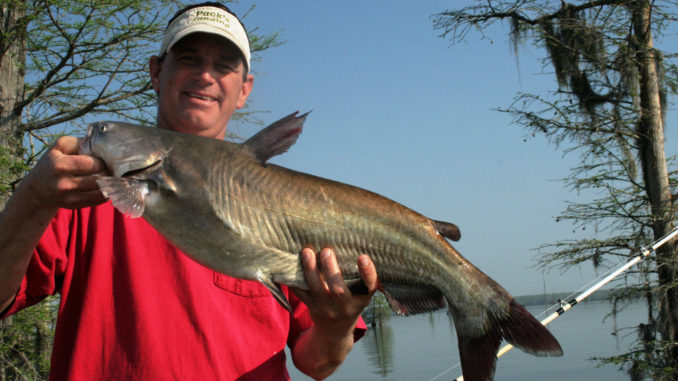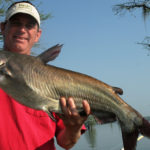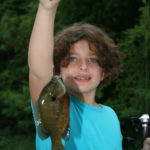
Bass, crappie, panfish and catfish will all bite
June marks the beginning of the 4-month closed fishing season for striped bass on the Santee Cooper reservoirs. Fishing for stripers has been excellent this winter and spring, but despite the closure there’s still plenty of fishing action available this month. All the panfish species are biting, including bream, shellcracker and crappie, plus largemouth bass fishing continues to be very good — and the catfish action is more consistent in deeper water.
The bass fishing continues to be among the top attractions for both lakes. Bass pro Cecil Wolfe, who guides out of Black’s Camp (843-753-2231), said the largemouth are still in shallow water, but just a bit deeper than in the previous couple of months.
“We’ll actually catch good largemouth in shallow water throughout the rest of the spring and summer,” Wolfe said. “The largemouths have moved from the spawning-type cover in very shallow water to slightly deeper water. Look for areas that are even just a couple feet deeper, but make sure there’s plenty of cover such as weeds, vegetation such as eel grass, cypress trees or other cover to which they can relate. They will be able to find food more readily in this slightly deeper water, and except for early and late in the day, they will be found holding tight to cover in depths ranging from four to eight feet deep. A wide variety of lures will still work, but early and late in the day, topwater lures are always an excellent choice for June largemouth fishing.”
Wolfe said that some fishermen will still find largemouths relating to deeper water in the main lakes along drops, but he seems to find bigger fish more consistently in the shallow, cover-laden water.
“Another productive pattern in June is when we have good water flow in the Diversion Canal,” he said. “Working the blowdowns and other cover along the edge of the Canal can produce some excellent largemouth action.”
The catfishing action begins to stabilize, in a good way, during June according to guide Marlin Ormseth
“While the catfishing is very good in the spring, the depths and places the fish are found will vary, and sometimes getting on a pattern that will hold up for a while is difficult,” said Ormseth (843-825-4713). “I like the more stable weather in June, and during the summer, (it) helps keep things more predictable.”
Ormseth said at this time of the year and throughout the summer, he will usually drift-fish in the afternoon and into the evening, usually until about midnight.
“Fishing late in the evening and then for a few hours after dark seems to give me the best opportunity to catch more big catfish,” he said. “It enables me to fish the magical time at dusk and then after dark. Some of my largest fish are caught during the summer right at dusk and for the first couple of hours after dark. Most of the fishing will come in the open-water areas of the lakes, with fish holding on the ledges and humps in open water — especially in lower lake.”
Catfish action is very good in the upper lake as well, according to Steve Pack at Pack’s Landing, but the big catfish are on a different pattern.
“The catfish will still be caught on cut bait in the river using live bait,” Pack said. “Also by June, we’ll begin to catch catfish on a different and very productive pattern.
“About this time of the year, the freshwater mussels begin to die off and start floating to the surface, and the blue catfish in particular will begin to feed on them,” he said. “We’ll drift-fish the open flats, and if it’s windy, we’ll catch big catfish 2 or 3 feet deep in 7 to 8 feet of water, drift-fishing shad or herring.
“The rigs are the key. We’ll use a crappie-sized float and split shot, with the bait suspended about 2 to 3 feet down. We’ll use a regular, big catfish hook; I like the 4/0 Kahle hooks for this type of fishing. The catfish will be roaming the flats looking for the mussels, and we’ll get into some huge catfish fishing in this unique manner. This fishing pattern will usually last several weeks, but it can provide great action while it’s happening. On calm days the catfish may be found a little deeper, so we’ll drift deeper areas, but we’ll still be fishing relatively shallow, usually 6 to 8 feet deep in 10 to 12 feet of water. This is a good pattern right on into July as well.”
Pack said panfishing is good for almost all species, including crappie, bream and shellcracker. Crappie will typically be caught on the deeper brush piles in both lakes tight-lining minnows or casting small jigs around the brush. The bream and shellcracker will usually be a bit more scattered and will be found holding close to trees or grass beds.







Be the first to comment